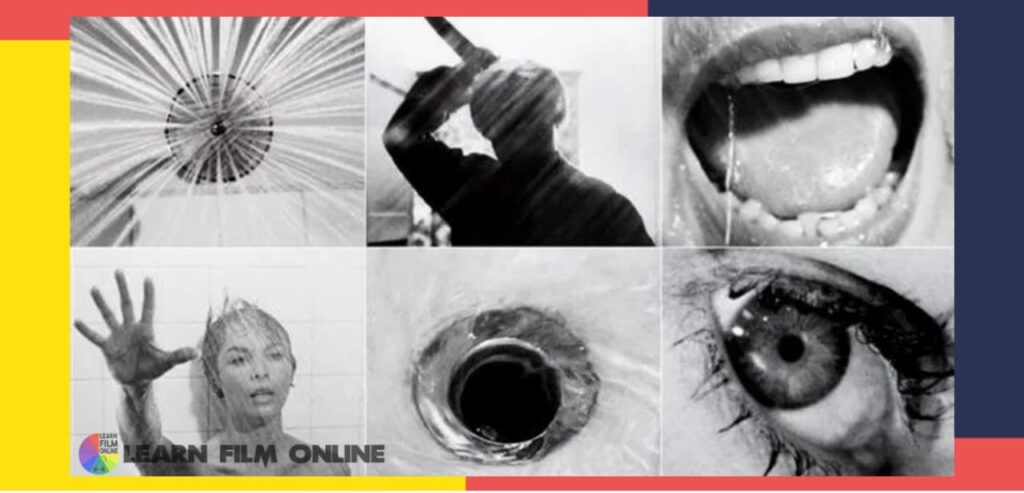Montage is a film editing technique where a series of short shots are arranged chronologically to supress space, time, as well as information. This particular term ‘montage’ has been used in several contexts. In French, the word “montage” applied to cinema simply stands for ‘editing’. Gradually the meaning changed and now it refers to the sequence of short shots combined together.
In order to get a better understanding about how to make a montage, learning about different types of montages and why do they fall in different categories, is the first step.
There are 5 basic yet most essential types of montages – Metric Montage, Rhythmic Montage, Tonal Montage, Over-Tonal Montage, Intellectual Montage.
Metric Montages –
The practice of cutting according to exact measurement, regardless of the content of the shot.
In Metric montage, a specific number of shots or frames are shot and placed next to each other, the selection of footages should be in a manner to establish a specific idea, location character, etc. It can be explained better with an example – Assuming, a beauty brand is to be established, in order to do that establishing beauty first is of utmost important. After collecting a few footages, compiling them into one single montage is the proceeding step. The metric montage is ready.
Rhythmic Montages –
The practice of cutting according to the content of the shots, or continuity editing. This is the most commonly used form of montage. Each shot’s length derives from the specifics of the piece and from its planned length according to the structure of the sequence.
In Rhythmic montage, we create a visual pattern and try to give it a complete sense, in simpler words we can say that in rhythmic montage we summarise the happening or process of any event. In order to have a better understanding of the subject, an example can help – assuming the motive of scene is to show the making of a product, the montage will be compiled of short shots displaying different steps involved in making and then a shot of the final product, indicating a lapse of time and summarizing the making. This is a rhythmic montage.
Tonal Montages –
The practice of cutting according to the emotional tone of the piece. This type of montage is a bit more subjective in the sense that one is not cutting towards any physical aspect of media. Instead, it’s a combination of both metric and rhythmic montage to highlight any emotional issue that may be present at that particular point of time in the story. These shots can be matched by both video and audio characteristics.
In Tonal Montage, pulling out the emotional connection in the scene is important. Most of the time reaction shots are used after any dialogue or after any activity. An example can explain the topic further – presuming the objective of a frame is to showcase a scene where a person has died, that would procure emotions like grief, sadness on the faces of the people close to the departed soul. Capturing the reactions and placing them all together makes a tonal montage.
Over-Tonal Montages –
Cutting according to the various “tones” and “overtones” of the shot. This one is even more abstract than tonal montage. Over-tonal montage is the intermixing of larger themes, with the emotional tones of the piece through the use of metric and rhythmic montage.
In other words, Over-tonal montage is an interplay between metric, rhythmic and tonal montages. Assume that in one for the sequence one has already established the metric, rhythmic and tonal montage, the blend of all three will be able to grab the attention of viewers with a much stronger emotional impact.
Intellectual Montages –
If asked to describe in one line, the practice of cutting according to the shot’s relationship to an intellectual concept is an intellectual montage.
The Intellectual montage is very powerful, with the context being affect. It is difficult to achieve while writing or planning but easy to understand. In simple terms, one can say that when a story is shown with the use of metaphor, it is called an intellectual montage, here the audience has to apply their intellect. It depends on the maker, and what they want to achieve visually, according to that, they can select the kind of montage that they want to make.
“How to write a Montage in Scripts?” is a question that often springs up quite often. Irrespective of what type of montage one wants to make, for writing any montage one just has to type “MONTAGE” in capital letter and press enter twice to distinguish it from the rest and start writing the action lines. Every event in one line, that’s it.
#Montage #TypesOfMontages #MetricMontage #RythmicMontage #TonalMontage #OvertonalMontage #IntellectualMontage #VideoEditing #FilmEditing #FilmMaking #CinemaScience

